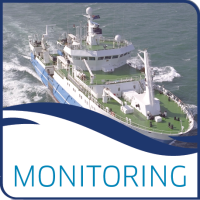Scottish Marine and Freshwater Science Vol 9 No 1
Report describing the action taken by Marine Scotland after the grounding of the Transocean Winner semi-submersible rig on 27 July 2017 at 0652 local time at 58º 18.51’N 006º 46.2’W near Dalmore on the Isle of Lewis.
Data and Resources
| Field | Value |
|---|---|
| Publisher | |
| Modified | 2018-01-25 |
| Release Date | 2018-01-25 |
| Identifier | 26f6063a-b0f7-452f-bc10-186ecac75e0e |
| Spatial / Geographical Coverage Location | Scotland |
| License | UK Open Government Licence (OGL) |
| Data Dictionary | Primary marine hazard associated with the incident is the 280 tonnes of diesel on-board the rig. The diesel is split between four separate storage tanks. Two tanks are known to have been breached with a combined potential loss of 53 m3. Diesel comprises a number of light volatile hydrocarbon compounds that will readily evaporate. Poor weather will aid dissolution, spreading and evaporation of any diesel losses. Total additional fluids on-board the rig, excluding diesel, account for an additional 63 m3 and are all in use within the rig’s infrastructure. An ecotoxicological assessment based on MSDS information of the additional fluids that account for 95% of the total additional fluids indicates that they are non-bioaccumulative and biodegrade. Two water samples collected from the Dalmore Bay foreshore were analysed by SEPA (9 August 2016). Low levels of weathered diesel were detected in both water samples, but no hydraulic fluid was found. No additional chemicals of concern were detected in the GCMS screens undertaken. Four additional baseline water samples were collected from Broad Bay on 23 August 2016 and are awaiting analysis for diesel. SEPA has also conducted ambient air monitoring 0.5 km southeast of the rig location. Four water samples collected from Broad Bay on 7 September 2016 showed had no detectable oil. Additional surface water samples collected on 24 October 2016 from three locations within Broad Bay showed hydrocarbon concentrations of <0.5 mg/l. Twenty eight intertidal surface sediment samples have been collected from around the Isle of Lewis including Dalmore Bay and Broad Bay, and are awaiting analysis for a suite of analytical parameters. MSS has analysed repeat baseline mussel and salmon samples collected from Loch Roag showing very low levels of PAH and n-alkanes, consistent with clean rope grown mussels and clean farmed salmon. None of the three repeat sample sets show evidence of petrogenic (diesel) contamination. The sensory panel test has recorded no taint for any of the salmon samples collected. Modelling the total loss of 280 tonnes of diesel from the rig at Dalmore Bay using the weather conditions encountered indicated that the majority of the spill migrates towards the northeast along the Lewis coastline. Some residual diesel will migrate into the Loch Roag. Forced modelling has indicated that a continuous ten knot north easterly wind would drive the spill southwest towards Loch Roag. Modelling a release of 40 m3 of diesel at Broad Bay with southerly and south-easterly winds showed the spill initially moving south, then beaching on the north coast of the bay before moving north east out of the bay and onto the North Minch. The key sensitivity identified are the aquaculture sites in Loch Roag. However, the distance from the incident, hydrocarbon composition, modelled trajectory of a potential spill and the prevailing weather conditions encountered would greatly reduce the aquaculture risk to exposure from a diesel spill. The port of refuge identified in the event of re-floating the Transocean Winner is Broad Bay located on the eastern seaboard of Lewis. The bay is close to the incident and provides the physical characteristics required for ease of access, mooring and protection from the prevailing weather to enable further survey work to be conducted in a safer environment. In preparation to re-floating the rig, the salvers have safely recovered approximately 242 m3 of diesel/water mix to the a supply vessel, significantly reducing the potential of pollutant loss during transit and anchorage in Broad Bay. Surveillance flights on 21 and 22 August showed some very small patches of sheen not far from the rig off Dalmore Bay. During tow, an over flight showed small patches of sheen thought to be connected with the stabilisation works. Once the rig had been removed from Dalmore Bay an over flight recorded no evidence of a sheen. |
| Public Access Level | Public |


